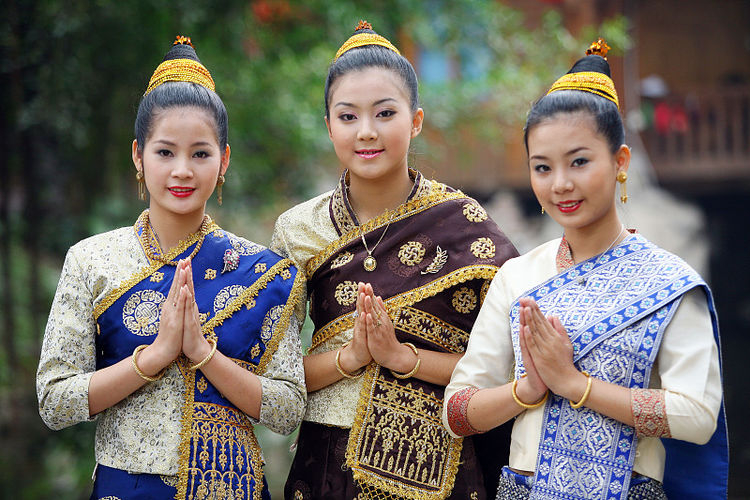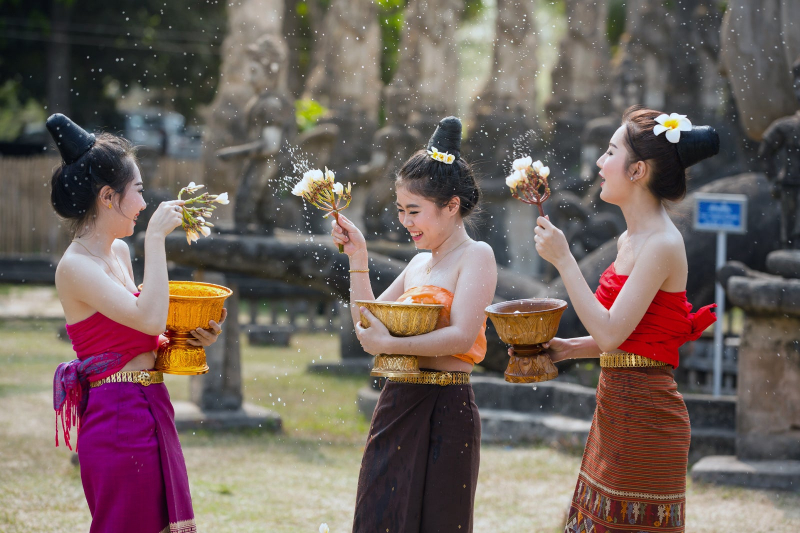The Nop
The most typical form of welcome and farewell is a brief bow, called a "nop" in Laos. It entails putting one's hands together in prayer between the level of the chest and the level of the nose, without contacting the body, and bending slightly. The greater the respect shown, the higher the hands are raised. The slight bow is typically accompanied with a grin and a small bending of the knees. Never raise the hands over the level of the nose.
All of Southeast Asia's Buddhist regions employ this type of bow. In addition to being a greeting, it can also be used to show gratitude or respect. The bow is particularly significant when addressing persons of higher position or age to express respect. When two people of different statuses cross paths, the person with the lowest status should start the bow (i.e. the one who is younger, of lower income, of lower position, or a women meeting a man). Bows shouldn't be used around kids. Just say hello to them. Many people from Southeast Asia are at ease shaking hands with people from the West.
The "height rule," according to which persons of low status are supposed to respect those of high status, has been physically shown by the nop. During the nop, the hands are frequently lifted while you bow your head, but there are guidelines for how high they should be raised. The more respect is generally exhibited, the higher the hands are lifted. It's also significant to note that the hands are raised gracefully and fluidly rather than abruptly. Additionally, respect is indicated by lowering the head toward the hand. Hands are held at neck level, but not above the chin, when equals or strangers who are unsure of the status of the individuals they are meeting meet. The head is dropped so the nose is just above the fingertips when an inferior and superior are in contact. The heads of the superior and inferior are either straight or slightly curved.
Nodding is a way to show respect for both people and inanimate objects. This is frequently done when passing a temple or other place of worship. When approaching a statue of the Buddha or a monk, one is expected to bow deeply until their head almost touches the ground. Men are expected to sit on their heels, and ladies should cross their legs to the side. One should straighten their body into a sitting nop position once their head almost hits the floor and place their palms on the ground (right hand first).












